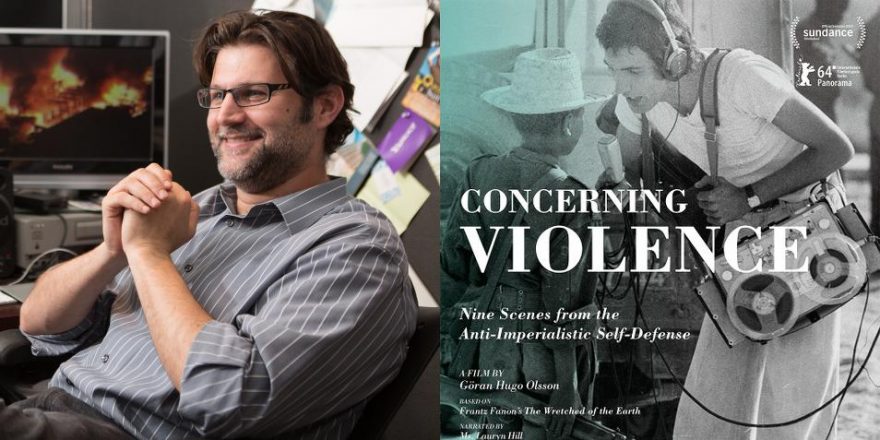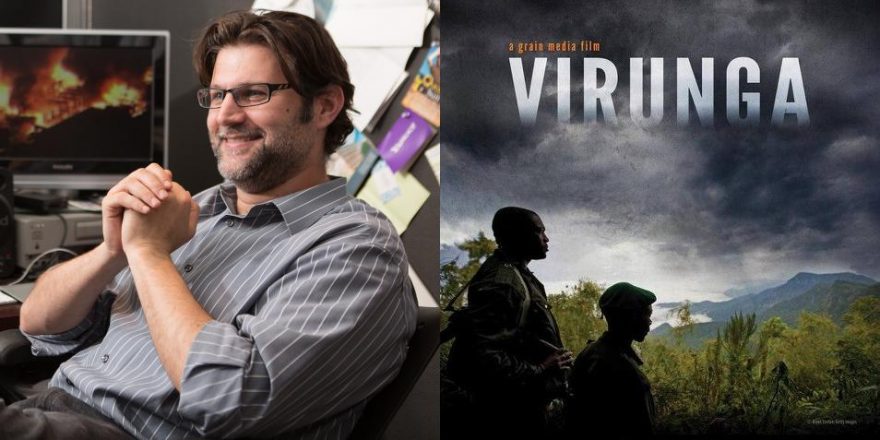I was excited to see Concerning Violence, Göran Hugo Olsson’s follow-up to his powerful and groundbreaking The Black Power Mixtape 1967-1975. This new film promised to deliver another unique look at forgotten moments in the history of resistance to oppression. In the end, I struggled to understand Concerning Violence. What (if anything) is this film is trying to communicate to an audience? Why did the filmmaker make the choices he did with this spectacular yet harrowing material? Does this treatment do justice to the crucially important historical subject it depicts?
The Black Power Mixtape 1967-1975 succeeded by using its wealth of archival material in a cinematic way that invited audiences to dive into each piece of film as an artifact unto itself and to assemble those artifacts into a coherent history. It wove the potent footage — featuring familiar historical figures but in more extended and extemporaneous clips than many had seen — together with commentary by contemporary African-American artists and thinkers. The loosely structured film invited audiences to make connections between people and events, and the past and the present, without forcing any agenda (aside from the intrinsic value of this history).
Concerning Violence, subtitled Nine Scenes from the Anti-Imperialistic Self-Defense, also has a unique design for the use of archival footage in documentary. The topic this time is less familiar to most Americans: African peoples’ efforts to overcome colonization. The commentary is made up of excerpts from The Wretched of the Earth by revolutionary postcolonial philosopher Franz Fanon. The hip-hop artist Lauryn Hill reads portions of this text and, in an odd decision, this commentary is also rendered as text on-screen. The large white letters obscure the archival footage throughout the film.
The use of language in relation to cinematic voice in The Black Power Mixtape 1967-1975 was subtle. In Concerning Violence, it is brutal. It begins with a six-minute preface read by philosopher Gayatri Spivak. Spivak is an important figure and what she says has merit, but the treatment is anti-cinematic to the point of incomprehensibility. Spivak sits in a swiveling chair in a university office, her figure overwhelmed by mountains of books — the word is literally dominating the image. She talks directly to the camera in highly academic language that seems to be part explanation and part apologia. It’s hard to tell because the density of information is overwhelming when presented in this format. Is this a warning or more a matter of the filmmaker attempting to acclimate the audience to the anti-cinematic use of language that permeates the film?
The body of the film is equally challenging. The footage is stark and at times blisters with violence incarnate. Fanon’s words are still sharply provocative today. Hill’s strong voice reflects the potency of the message. Yet, in Olsson’s hands, these pieces are not melded together in a way that makes sense for the cinema. As in The Black Power Mixtape 1967-1975, the use of long, uncut clips is merited by the nature of the rich and visceral footage. However, unlike the previous film, the intervention of the white text — always depicting Fanon’s words simultaneously with Hill’s voice — creates a puzzling barrier to absorbing the reality captured in the footage. The audience is frustrated, even alienated, by the need to peer through the words to see images that would seem to present the most indexical value to the history being depicted.
It is possible to deconstruct these unconventional choices. Spivak, for instance, initially came to prominence for writing an unconventional translator’s preface to the English edition of French poststructuralist philosopher Jacques Derrida’s opus On Grammatology. In this text, Derrida is largely concerned with “the violence of the letter,” which becomes a powerful theoretical tool in connecting language to power. The poststructuralists sought a break with the history of philosophy and letters. They saw the relationships between sign, signified, and signifier as power relationships that needed to be understood and subverted in much the same way that colonial power structures needed to be dismantled.
Perhaps it is Olsson’s intention to evoke these ideas symbolically. The brutal, anti-cinematic use of language in Concerning Violence can be seen as a symbol for violence itself. Perhaps alienation and separation are the feelings intended for the audience by the filmmaker. What would the opposite of these emotions — feelings of comfort and assurance — mean in reaction to images of racist brutality? Too often historical documentary serves as a salve. It renders historical violence as dramatic arc, defanging history and rendering it more palatable, safe and comfortable. Olsson’s anti-cinematic choices can be seen as intentional symbolic violence directed at the audience, designed to prevent us from having a typical and potentially voyeuristic experience of this footage. Our desire to see violence from our privileged theater seat may itself be violent.
Intellectually, I can understand how the brutal anti-cinematic voice of Concerning Violence may be valid. Cinematically, I cannot. Experimentation is needed in the historical documentary genre because the traditional modes of representation do reinforce old ways of seeing and knowing. Concerning Violence is an interesting philosophical treatise in this regard. Spivak calls it a “teaching text.” As a movie, it is more of a failed experiment.







